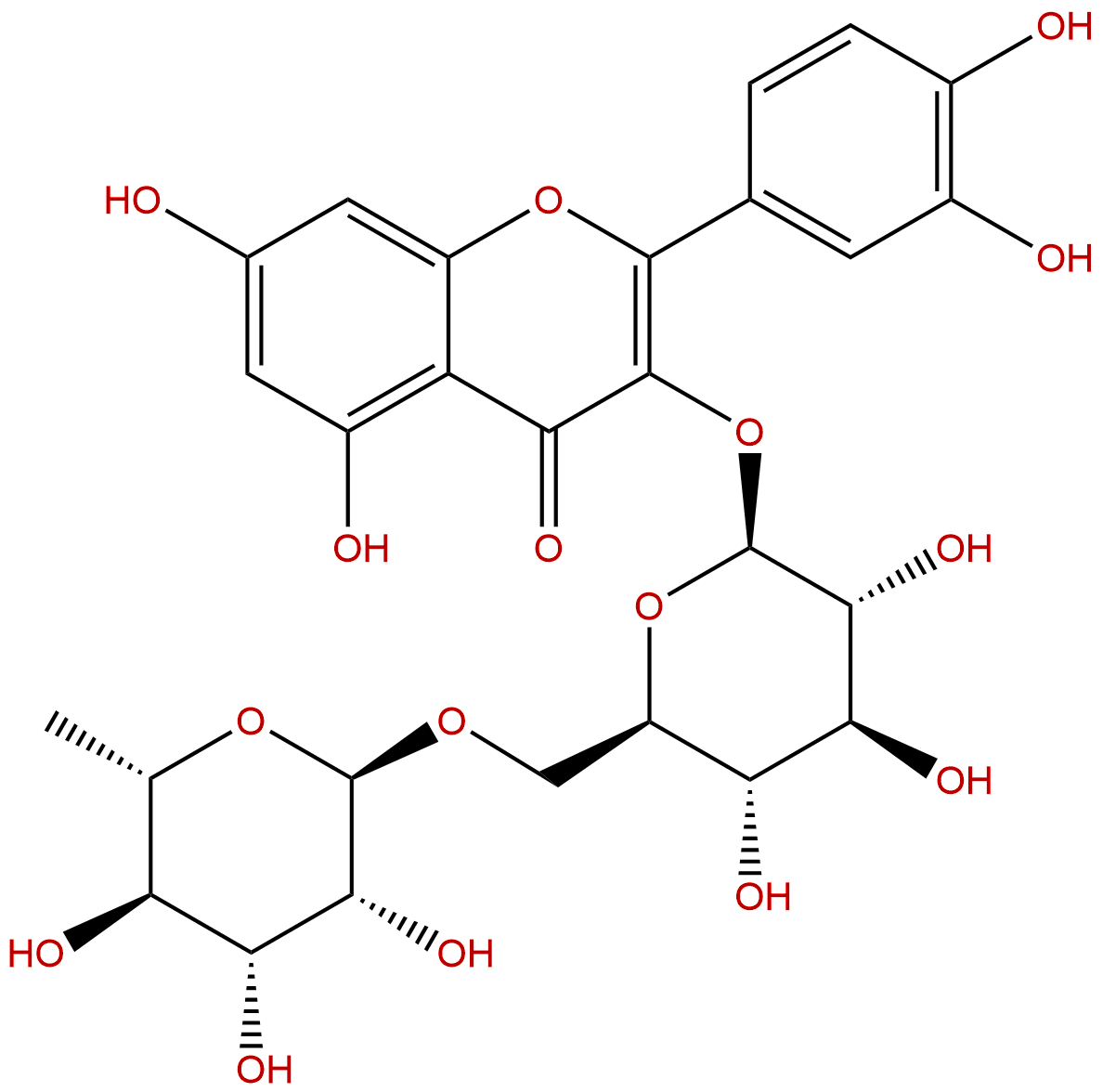
RutinCAS No.:153-18-4
|
||||||||||
 |
|
|
||||||||

| Catalogue No.: | BP1234 |
| Formula: | C27H30O16 |
| Mol Weight: | 610.521 |
Product name: Rutin
Synonym name:
Catalogue No.: BP1234
Cas No.: 153-18-4
Formula: C27H30O16
Mol Weight: 610.521
Botanical Source: many plants. Presence in over 30 families, mostly dicotyledons, demonstrated by 1955. First Ruta graveolens (rue) (Weiss, 1842)
Physical Description: Yellow powder
Type of Compound: Flavonoids
Purity: 95%~99%
Analysis Method: HPLC-DAD or/and HPLC-ELSD
Identification Method: Mass, NMR
Packing: Brown vial or HDPE plastic bottle
Storage: Store in a well closed container, protected from air and light. Put into refrigerate or freeze for long term storage.
Whenever possible, you should prepare and use solutions on the same day. However, if you need to make up stock solutions in advance, we recommend that you store the solution as aliquots in tightly sealed vials at -20℃. Generally, these will be useable for up to two weeks.
The product could be supplied from milligrams to grams, up to kilograms
Inquire for bulk scale.
Descriptions:
Rutin is a natural antioxidant, all doses can diminish reactive oxygen species and high doses (10-100 microM) decrease malondialdehyde concentration; induce favorable changes in the antioxidant defense system of cultured HepG2 that prevent or delay conditions which favor cellular oxidative stress.[1]
Rutin, can dose-dependently inhibit Aβ42 fibrillization and attenuate Aβ42-induced cytotoxicity in SH-SY5Y neuroblastoma cells, and decrease the formation of reactive oxygen species (ROS), NO, glutathione disulfide (GSSG), and malondialdehyde (MDA), reduce inducible nitric oxide synthase (iNOS) activity, attenuate mitochondrial damage, increase the glutathione (GSH)/GSSG ratio, enhance the activities of super oxide dismutase (SOD), catalase (CAT) and glutathione peroxidase (GPx), and modulate the production of proinflammatory cytokines by decreasing TNF-α and IL-1β generation in microglia.[2]
Rutin(200 mg/kg) has gastroprotective effect through an anti-lipoperoxidant effect, and also by enhancement of the anti-oxidant enzymatic (GSH-Px) activity.[3]
Rutin (R) in combination with vitamin E (VE) synergistically inhibit oxidative damage, attenuates expression in -60 cells and that this effect is mediated by a decreased activity of through down-regulation of protein expression of (-R)/, while the of R+VE appears to play a minor role.[4]
Rutin attenuates ischemic neural apoptosis by reducing the expression of p53, preventing morphological changes and increasing endogenous antioxidant enzymatic activities, thus, rutin treatment may represent a novel approach in lowering the risk or improving the function of ischemia–reperfusion brain injury-related disorders.[5]
References:
[1] Alía M, Mateos R, Ramos S, et al. Eur J Nutr , 2006, 45(1):19-28.
[2] Wang S W, Wang Y J, Su Y J, et al. Neurotoxicology, 2012, 33(3):482-90.
[3] Kreft I, Fabjan N, Yasumoto K. Food Chem, 2006, 98(3):508-512.
[4] Mondul A M, Rager H C, Kopp W, et al. J Nutr, 2011, 141(11):2030-4.
[5] Khan M M, Ahmad A, Ishrat T, et al. Brain Res, 2009, 9(1292):123-35.
[6] Athar M T. J Liq Chromatogr R T, 2011, 34(6):446-455.
HPLC of Rutin
